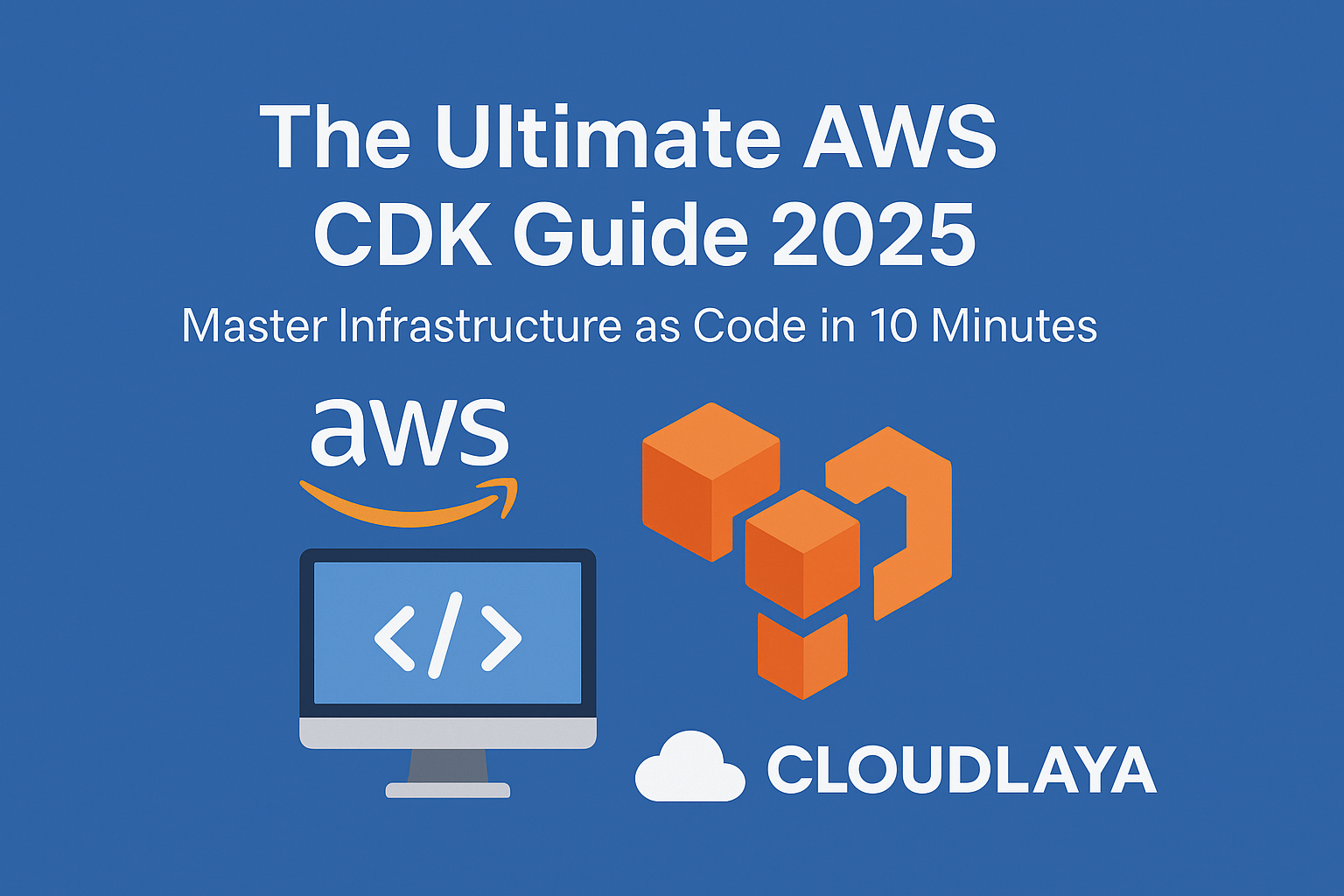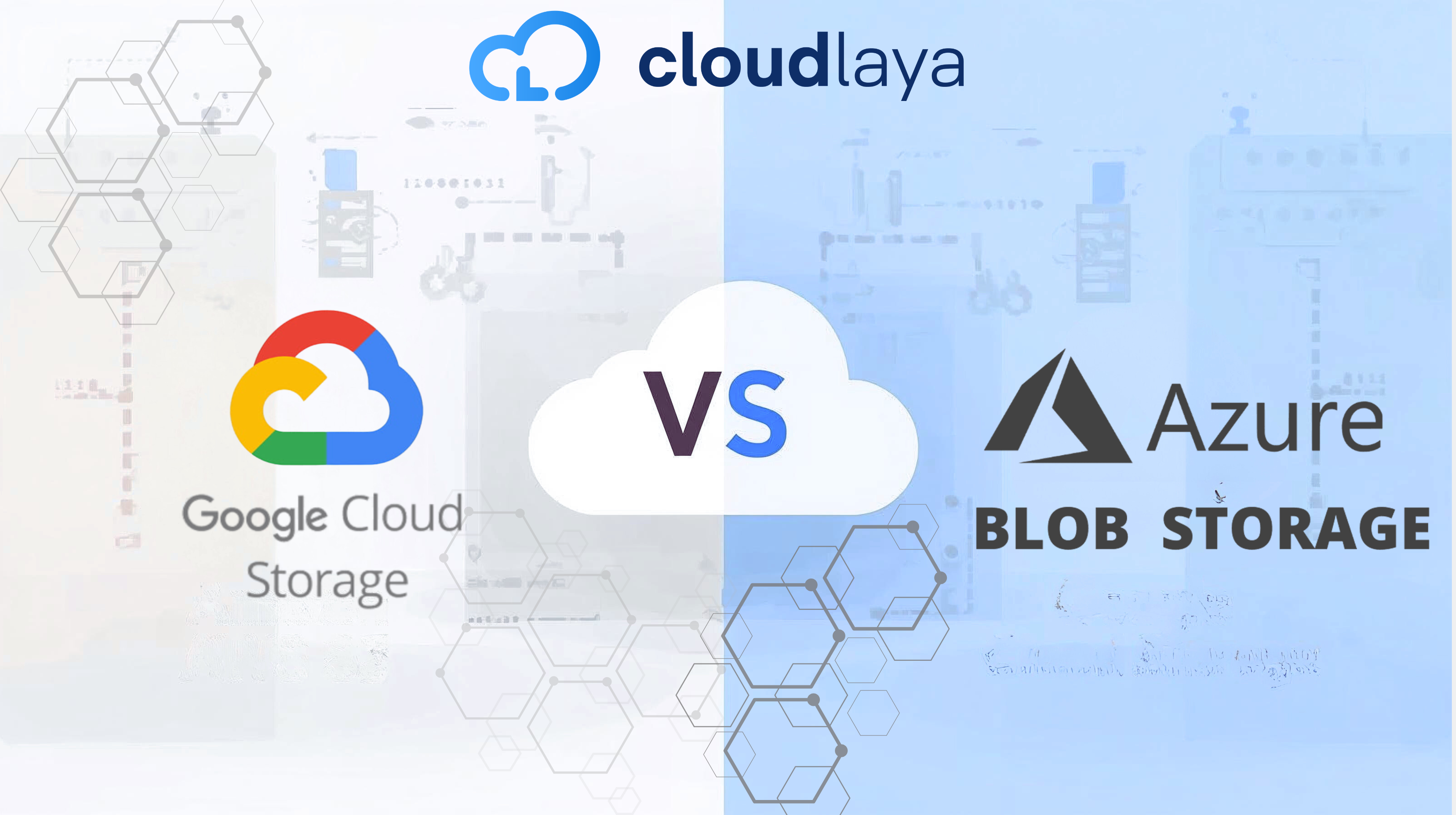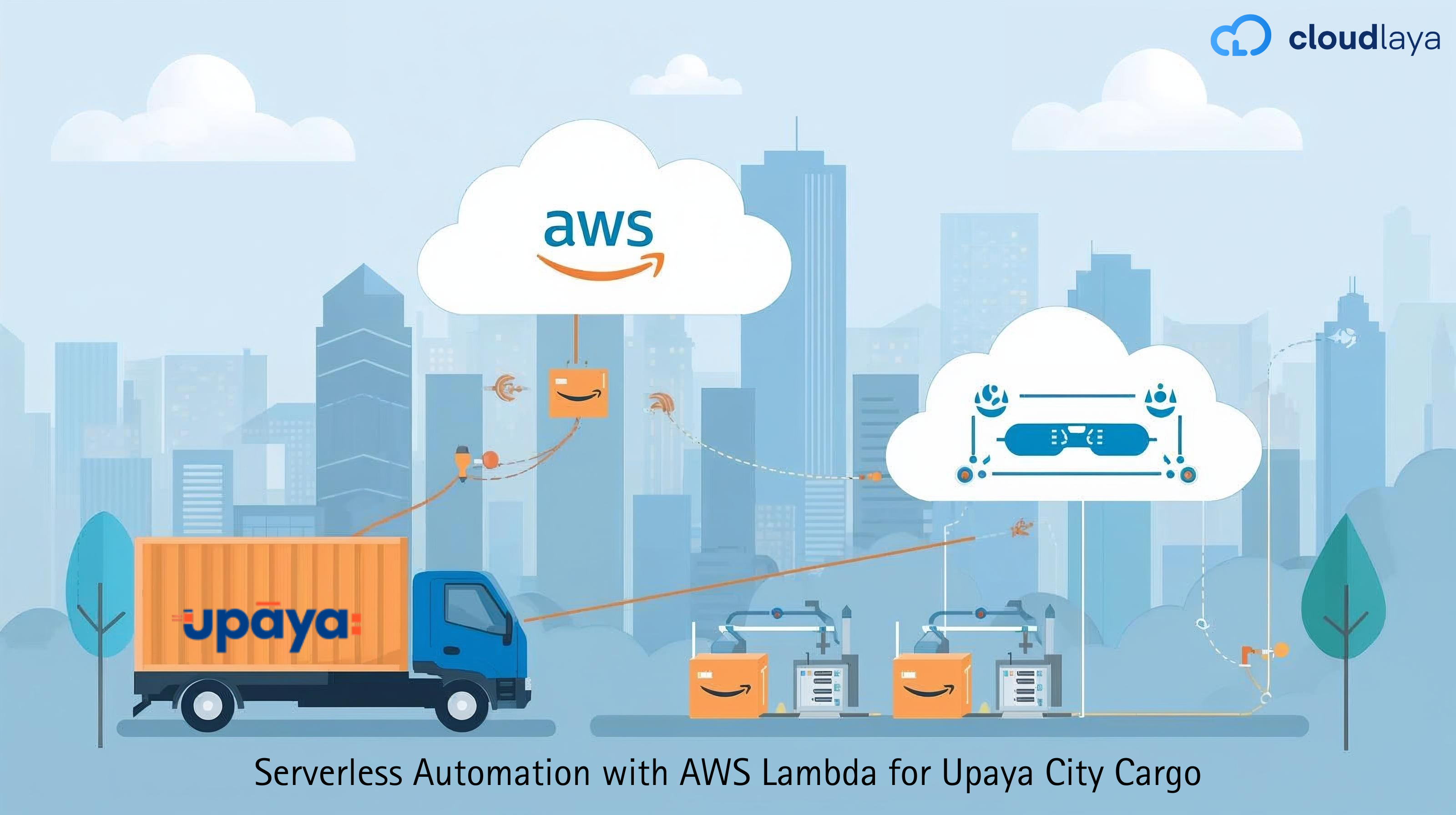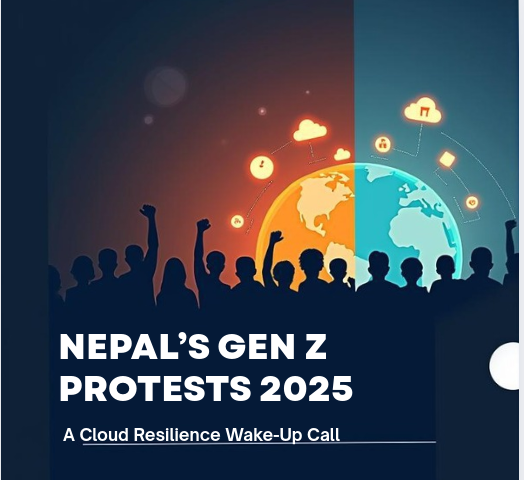
The Ultimate AWS CDK Guide 2025: Master Infrastructure as Code in 10 Minutes
What is AWS CDK, and why should you care?
The Cloud Development Kit (CDK) is changing the way developers think about cloud infrastructure, moving away from YAML or JSON templates to programming languages such as Python, TypeScript, or Java to describe cloud resources.Suppose you liken AWS CDK to having a personal assistant to provide cloud infrastructure. In that case, the functionality is to take your code and provide the CloudFormation templates necessary to run your application on Amazon Web Services.
How AWS CDK Works: The Simple Explanation
This framework follows a simple process:
1. Write Code: Define the infrastructure you want in your favourite programming language.
2. Synthesize: CDK compiles your code into CloudFormation templates.
3. Deploy: CloudFormation deploys the AWS resources.
4. Manage: Update and manage your infrastructure by updating the code.
This gives you control of programming languages and the power of AWS’s deployment engine.
Getting Started with AWS CDK: Your First Steps
Prerequisites for AWS CDK Development
Before starting AWS CDK, make sure you have:
- An AWS Account with the necessary permissions
- Node.js installed (version 14.15.0 or higher)
- AWS CLI configured with your credentials
- Basic programming experience using Python, TypeScript, or Java
Getting AWS CDK Installed
It is simple to get AWS CDK installed. Open your terminal and type:
npm install -g aws-cdk
And verify it installed:
cdk --version
Creating Your First AWS CDK Application
Now we can initialize a new CDK project:
mkdir my-cdk-app cd my-cdk-app cdk init app --language typescript
This will create a basic project structure with some sample code to help you get started.
AWS CDK vs CloudFormation: Which Should You Choose?
| Feature | AWS CDK | CloudFormation |
| Learning Curve | Moderate | Steep |
| Code Reusability | High | Low |
| Testing | Easy | Difficult |
| IDE Support | Excellent | Limited |
The CDK excels in situations when:
- You require complex logic as part of your infrastructure
- You want the ability to reuse code across projects
- You need your infrastructure to integrate with your existing development workflows
- You need increased testing capabilities
Conversely, CloudFormation excels as your infrastructure when:
- You only need a simple, static infrastructure
- Your organization desires a declarative approach
- You need to target a specific mapping of an AWS service directly
Essential AWS CDK Concepts Every Developer Needs
Definition of Constructs: The Building Blocks of AWS CDK
Constructs are the building blocks of AWS CDK. They are all cloud components. A construct could be a single AWS resource or a complex architecture made up of multiple AWS services.
There are three types of constructs:
- L1 Constructs: a direct mapping to CloudFormation resources
- L2 Constructs: a more meaningful abstraction to Cloud Formation resources with some sensible defaults
- L3 Constructs: a complete pattern that implements a fully considered use case
Stacks and Apps
- Apps: the root construct that contains all your CDK code
- Stacks: the deployment unit contained in an app, which maps to a CloudFormation stack
Environments
Environments infer where your stack deploys (the account and region), allowing for equality in deployment as you move through development, staging, and production.
Popular AWS CDK Use Cases and Examples
The SDK for AWS infrastructure is great for quickly building entire stacks of web applications:
typescript
const vpc = new ec2.Vpc(this, 'MyVpc', {
maxAzs: 2
});
const cluster = new ecs.Cluster(this, 'MyCluster', {
vpc: vpc
});
const loadBalancer = new elbv2.ApplicationLoadBalancer(this, 'MyALB', {
vpc: vpc,
internetFacing: true
});
Serverless Applications
AWS CDK makes building serverless architectures easier.
- Lambda functions with adequate IAM roles
- API Gateway integrations
- DynamoDB tables with indexes
- S3 buckets with event notifications
Data Pipelines
- Build reliable data processing workflows:
- Step Functions for workflow management
- AWS Glue for ETL
- Kinesis for streaming processing
- RedShift for analytics
AWS CDK Best Practices for 2025
Project Structure
Organize your CDK projects logically:
my-app/ ├── lib/ │ ├── constructs/ │ ├── stacks/ │ └── interfaces/ ├── bin/ ├── test/ └── cdk.json
Security Guidelines
- Use least-privilege IAM policies
- Turn on encryption for all data storage
- Use properly configured VPC security groups
- Regular security audits of the generated CloudFormation
Cost Efficiency
- Tagging all resources for cost tracking
- Using the right Instance Types
- Setting up auto-scaling policies
- Regular cost audits and optimizations
Testing Methods
IT supports different testing methods:
- Unit Tests: Verify functionality of individual constructs
- Integration Test: Verify functionality at the stack level
- Snapshot Tests: Identify unintended changes to the template
Troubleshooting Common AWS CDK Issues
Deployment Failures
When deployment issues occur in the cloud, they are typically due to:
- Missing IAM permissions
- Resource name collisions
- Cross-stack dependencies
- Region restrictions
Performance Problems
- To improve the performance of your CDK application:
- Make good use of the construct libraries
- Use as few cross-stack references as possible
- Optimize the time to synthesize your stacks
- Use caching effectively
Version Compatibility
Keep the following in mind regarding version management of AWS CDK:
- The toolkit application may stop working if versions are not kept up to date
- Upgrades may include breaking changes that require a prior migration to keep your application working
- The community will only support the latest version of this software
AWS CDK Resources and Next Steps:
Essential Learning Resources
- AWS CDK Developer Guide—The official documentation.
- CDK Workshop—The hands-on tutorial.
- AWS CDK Examples—Examples of community-built tools.
- CDK Patterns—Real-world patterns and solutions
Community and Support
Join the thriving community of AWS CDK contributors:
- AWS CDK GitHub Repository.
- Use Stack Overflow to ask questions and look for related answers.
- Use AWS forums for official support.
- Look for local AWS user groups or meetups to engage with like-minded CDK enthusiasts.
Advanced Topics to Explore
Now that you are familiar with CDK basics, you may want to look into:
- Custom construct development
- CDK for Terraform (CDKTF)
- Multi-account deployment best practices
- Advanced testing
- CI/CD practices and patterns
Conclusion: Your AWS CDK Journey Starts Now
The infrastructure-as-code framework is the future of how we will manage our infrastructure, combining the best of programming languages with the power of AWS services. No matter if you’re building simple web applications or full enterprise systems, AWS CDK provides the constructs and abstractions you need to succeed.
Start small, explore how to use basic constructs, and expand your infrastructure from there. There are tons of excellent resources in the AWS CDK community to help get you going.
Remember: infrastructure as code isn’t just automation. It’s about applying software development best practices to manage cloud infrastructure effectively. With this framework, you’re not just managing resources, you’re architecting scalable, maintainable, and dependable systems.
Start your AWS CDK journey today, and learn how to change the way you think about cloud infrastructure. The initial learning curve will feel imposing, but the productivity improvements and architectural impacts are worth it for any cloud developer looking to be serious.
Want to explore AWS CDK further? Check out our full tutorial series on CDK, or check out our infrastructure automation guides for even more advanced capabilities.
Looking for assistance with AWS CDK or cloud services?
Beginning to use the CDK can change your development process but you don’t have to go alone! Cloudlaya helps startups and enterprises with their cloud infrastructure and management using modern tools, like it , Terraform, and CI/CD automation. Whether you’re creating your first serverless app or working with multi-account AWS environments, our cloud experts will ensure you are not alone.
👉 Are you ready to add automation and scalability to your infrastructure? Contact a Cloudlaya team member to discover how we can help create and optimize your AWS cloud solutions.


